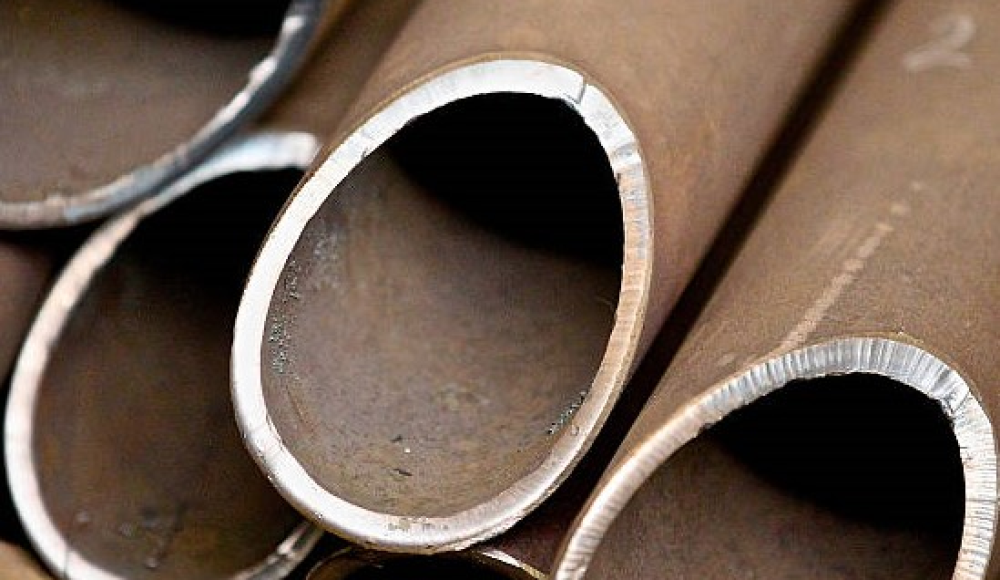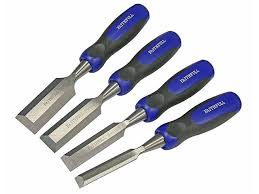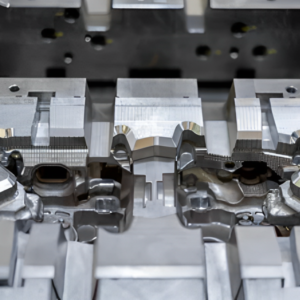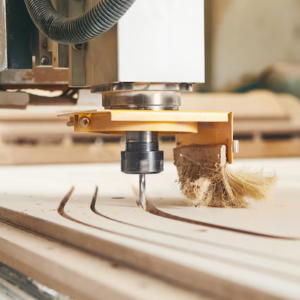Beveling is a fundamental technique in engineering and manufacturing that involves cutting or grinding an edge at an angle other than 90°. It is widely used across multiple industries to enhance the functionality, 安全性, and aesthetics of parts. From welding applications to architectural design, bevels play a crucial role in ensuring proper fit, stress reduction, and improved durability.
This article explores the importance of beveling, その応用例, its different types, and how it compares to other edge treatments like chamfers and fillets. We will also discuss its advantages, デメリット, and its critical role in gear systems.
Introduction to Beveling
あ ベベル is a sloped edge or angled surface formed by removing material from a workpiece at an angle other than 90°. This creates a smooth transition between two surfaces, which can serve 構造的な, 機能的, or aesthetic purposes.
製造業において, beveling is achieved through various processes, 含む 研削, 機械加工, レーザー切断, または フライス加工. The degree of the bevel and the width of the face depend on the specific application requirements.
Beveling is widely used in different industries because of its ability to:
✔ Improve assembly and alignment.
✔ Reduce sharp edges to enhance safety.
✔ Strengthen weld joints.
✔ Enhance the durability of machine components.
✔ Add a polished and professional finish.
Applications of Bevels in Engineering and Manufacturing
Bevels are used in a variety of industries and applications. Some of the most common uses include:
Architectural and Furniture Design
- Beveled edges are commonly seen in furniture, countertops, 鏡, and glass panels to enhance appearance and safety.
- In architecture, bevels provide an elegant finish to door frames, window trims, and decorative edges.
自動車および航空宇宙部品
- Car manufacturers use beveling in エンジン部品, 歯車, and body components to improve aerodynamics and structural integrity.
- Aerospace components such as turbine blades and fuselage panels use beveling to enhance strength and reduce stress concentrations.
Machine Parts, ツール, and Blades
- 切削工具, 含む ナイフ, ドリルビット, and saw blades, have beveled edges to improve cutting efficiency and reduce wear.
- Machine parts such as シャフト, ファスナー, and bearing surfaces often include bevels to prevent stress concentrations and enable smoother operation.
Welding Applications
- Beveling is essential in welding because it creates grooves that allow better penetration of weld material, その結果 より強い, more durable joints.
- It is commonly used in the construction of パイプライン, 圧力容器, and structural steel components.
Safety and Aesthetic Benefits
- Sharp edges can be hazardous. Beveled edges reduce the risk of cuts or injuries in consumer products, 産業機器, and architectural designs.
- In product design, ベベル add an aesthetically pleasing look, making objects appear more refined and professional.
Types of Bevels and Their Functions
Bevels come in many shapes and sizes, each designed for specific purposes in engineering, 製造業, そしてデザイン. Some bevels are simple, used for reducing sharp edges or making parts fit together better, while others are more complex, helping with 溶接, 構造的完全性, そして美学.
Let’s break down the most common types of bevels, 彼らはどのように働くのか, and where they are used.
Plain Bevel – The Most Common Type
あ plain bevel is a simple, angled cut along an edge. It has a consistent width and angle, making it one of the most widely used bevel types.
✅ なぜそれを使うのか?
- 役立ちます reduce sharp edges, 部品をより安全に扱えるようにする.
- Makes assembly easier by guiding parts into place.
- Improves durability by reducing stress at the corners of a part.
- Adds a なめらか, finished look to machined parts.
✅ Where is it used?
- Furniture and architectural designs for a polished look.
- Metal and plastic components to remove rough edges.
- Mechanical parts to improve strength and wear resistance.
J-Prep Bevel – Designed for Stronger Welds
あ J-prep bevel is a special type of bevel used in welding. It creates a J-shaped groove along the edge of a part, helping the weld penetrate deeper and form a stronger joint.
✅ なぜそれを使うのか?
- 作成します a larger surface area for welding, making the joint stronger.
- Helps weld metal fuse more effectively, reducing weak spots.
- で使用されます high-pressure and high-temperature environments where strong welds are critical.
✅ Where is it used?
- Pipelines and pressure vessels that carry gas or liquids under high pressure.
- Shipbuilding and heavy machinery to improve structural integrity.
- Aerospace and construction projects where welding strength is essential.
J-Prep Bevel with Back Bevel – Even Stronger Welding
あ J-prep with a back bevel adds an extra angled cut behind the J-prep bevel. This allows for even deeper weld penetration, creating a more reliable joint.
✅ なぜそれを使うのか?
- Adds extra weld volume, making the joint even stronger.
- Gives welders better control over the shape and depth of the weld.
- Makes it easier to inspect the weld for 品質管理.
✅ Where is it used?
- Oil and gas pipelines that need maximum durability.
- Bridges and skyscrapers, where weld failures could be catastrophic.
- Nuclear power plants そして chemical processing facilities.
Compound Bevel – Two Angles for Better Fit and Look
あ compound bevel is made up of two different angled cuts along the same edge. This creates a more complex shape that can improve how parts fit together or enhance the overall design.
✅ なぜそれを使うのか?
- 作成します stronger and more precise joints in wood, 金属, and plastic.
- It can be used to blend different surfaces smoothly.
- 改善します 美的魅力 in high-end designs.
✅ Where is it used?
- Woodworking and cabinetry to create tight-fitting joints.
- Machined metal parts where a smooth transition between surfaces is needed.
- Decorative and architectural elements that require precision.
Compound J-Prep Bevel with Back Bevel – The Ultimate Weld Joint
これはです highly specialized bevel that combines multiple angles, ある J-prep bevel, そしてa back bevel for maximum weld strength.
✅ なぜそれを使うのか?
- Provides the highest level of weld penetration and strength.
- Distributes stress more evenly, reducing the risk of cracking.
- Allows for better quality control and inspection.
✅ Where is it used?
- 原子炉 そして 発電所 where failures are not an option.
- Military and aerospace structures that require extreme durability.
- Industrial machinery and high-stress environments.
Each type of bevel serves a different purpose, から simple edge smoothing に creating ultra-strong weld joints. Whether you’re designing a piece of furniture, a structural component, or a high-pressure pipeline, choosing the right bevel type に不可欠です 安全性, 強さ, および機能.
Beveling Tools and Equipment
Beveling is an important process in machining, 溶接, 金属加工, and woodworking. To create クリーン, precise bevels, you need the 適切なツール 仕事のために. 一緒に働いているかどうか 金属, プラスチック, 木材, またはガラス, using the correct beveling equipment makes the process もっと早く, より簡単に, より正確です.
Hand Tools for Simple Beveling
必要に応じて 素早い, small-scale bevels, hand tools are a great choice. 彼らは 手頃な価格, easy to use, and perfect for light-duty projects.
🛠️ Metal Files – Simple and Affordable
- に使用されます small bevels そして removing sharp edges.
- Available in different shapes and sizes to fit various materials.
- に最適です: Finishing touches on 金属, プラスチック, そして木.
🔪 Chisels – Best for Woodworking
- 作成します angled cuts on wood with precision and control.
- Works well for 家具作り, carpentry, and detailed projects.
- に最適です:Hand-crafted wood projects そして fine detailing.
🖊️ Deburring Tools – Great for Small Metal and Plastic Bevels
- Handy for smoothing rough edges after cutting.
- よく使用されます CNC加工, 金属製造, and pipework.
- に最適です: プラスチックの部品, ソフトメタル, and small machine components.
Power Tools for Faster Beveling
If you need to bevel larger materials or work more efficiently, power tools can get the job done faster and with better precision.
🛠️ Angle Grinder – The Most Versatile Beveling Tool
- 用途 grinding wheels or flap discs to cut and smooth bevels.
- Works on 金属, プラスチック, and even stone.
- に最適です: Welding prep, 金属製造, and construction work.
🛠️ Router – Best for Wood and Plastic
- 作成します スムーズ, even bevels 木に, プラスチック, および複合材料.
- 用途 different router bits 作る custom edge profiles.
- に最適です: 家具作り, キャビネット, and decorative trim work.
🛠️ Belt Sander – Great for Large Beveled Surfaces
- Smooths out 長さ, straight bevels
- Works on 木材, プラスチック, およびソフトメタル.
- に最適です: Doors, tabletops, and large surfaces that need clean edges.
Industrial Beveling Machines for Heavy-Duty Work
For professional manufacturing, 溶接, and machining, industrial beveling machines offer 精度, 一貫性, とスピード.
⚙️ Plate Beveling Machine – Perfect for Welding Prep
- 作成します uniform bevels on large metal plates.
- で使用されます 溶接, 造船, and structural fabrication.
- に最適です: Preparing metal edges for strong weld joints.
⚙️ Pipe Beveling Machine – The Best for Pipe Fitting
- Specially designed for beveling round pipes and tubing.
- で使用されます 油 & ガス, 配管, and industrial piping.
- に最適です: Ensuring pipes fit together for welding and sealing.
⚙️ CNC Beveling Machine – Ultimate Precision for Mass Production
- 用途 computer control to create perfectly angled bevels.
- Works on 金属, プラスチック, および複合材料.
- に最適です: 航空宇宙, 自動車, and high-precision machining.
Specialty Tools for Advanced Beveling
Some jobs require more control, 精度, or flexibility. These specialized tools help create high-quality bevels for specific applications.
⚙️ Plasma & Laser Cutters – High-Tech Beveling for Precision Work
- Plasma cutters use heat to melt away material, creating smooth bevels.
- Laser cutters provide even greater precision, perfect for thin materials.
- に最適です: Industrial fabrication, 自動車部品, and detailed metalwork.
⚙️ Milling Machines – Best for Thick Metal Bevels
- 作成します 非常に正確です, heavy-duty bevels.
- Works on 鋼鉄, チタン, and other tough metals.
- に最適です: Manufacturing machine parts, ツール, および航空宇宙コンポーネント.
🛠️ Handheld Bevelers – Portable and Easy to Use
- 小さい, electric tools that cut 素早い, uniform bevels.
- に最適です welders and machinists working on-site.
- に最適です: Beveling edges before welding or assembly.
How to Choose the Right Beveling Tool
の best beveling tool depends on あなたの素材, project size, and precision needs. これがあなたが決定するのに役立つクイックガイドです:
| 材料 | Best Beveling Tools |
| 木材 | ルーター, chisel, belt sander |
| プラスチック | ルーター, deburring tool, angle grinder |
| Thin Metal | Angle grinder, belt sander, plasma cutter |
| Thick Metal | Milling machine, plate beveler, CNC beveling machine |
| パイプ & チューブ | Pipe beveling machine, handheld beveler |
How to Measure Bevels
Measuring a bevel correctly is essential for quality control 機械加工で, 溶接, carpentry, and metalworking. Whether you’re working on 航空宇宙部品, structural welds, or decorative edges, getting the bevel angle and size right ensures parts fit, function properly, and last longer.
Understanding What You’re Measuring
Before you start, it helps to understand what exactly needs to be measured. When measuring a bevel, you’re typically looking for:
✅ Bevel Angle – The sloped edge’s angle compared to a straight (90°) 角.
✅ Bevel Width – The distance from the start of the bevel to where it meets the main surface.
✅ Bevel Depth – How deep the bevel cuts into the material.
✅ Bevel Consistency – Ensuring the bevel remains uniform along the entire edge.
The tool you choose depends on how precise you need to be and what kind of bevel you’re measuring.
Basic Tools for Quick Bevel Measurements
必要に応じて fast and simple 測定, these tools work great:
📏 Ruler or Tape Measure – Best for Rough Measurements
- A standard ruler or tape measure can quickly check bevel width そして 深さ.
- Place the ruler against the beveled edge and measure from the start of the bevel to its endpoint.
- に最適です: Carpentry, basic machining, and non-critical measurements.
📐 Protractor – Great for Measuring Bevel Angles
- Place a protractor’s flat edge against the surface, aligning the beveled edge with the degree markings.
- Read the angle where the bevel meets the protractor’s scale.
- に最適です: 木工, 溶接, and general-purpose metal fabrication.
Precision Tools for More Accurate Bevel Measurements
一緒に作業するとき 機械加工部品, welds, または航空宇宙コンポーネント, you’ll need higher precision. Here are the best tools for accurate bevel measurements:
🔍 Bevel Gauge (Angle Finder) – Fast & Reliable for Angles
- あ bevel gauge (or adjustable protractor)allows you to match the angle of the bevel and then read the measurement.
- Some digital versions give instant angle readings.
- に最適です: 溶接, sheet metal work, and pipe fitting.
🛠 Combination Square – Easy Way to Check Bevel Width & 深さ
- Place the base of the square against the 平らな表面 and slide the ruler down to measure the bevel width and depth.
- Ensures your bevel is even along the entire edge.
- に最適です: 機械加工, フライス加工, and checking part dimensions.
📏 Digital Angle Finder – High Precision for Complex Bevels
- あ digital angle finder gives you an instant, precise reading of the bevel angle.
- に最適です 自動車, 航空宇宙, and fine metalworking where exact angles matter.
- に最適です: CNC加工, 航空宇宙, and industrial fabrication.
Specialized Tools for Bevels in Welding & 製造業
If you work with welding or high-precision machining, がある industry-specific tools designed to measure bevels in specialized applications.
🔥 Weld Gauge (Bevel Gauge for Welding) – Ensures Strong, Consistent Welds
- Specifically designed to check bevel angles on pipes, プレート, and joints before welding.
- Helps ensure the bevel meets welding specifications for penetration and strength.
- に最適です: Pipe welding, 圧力容器, and structural fabrication.
🔬 Optical Comparators & 三次元測定機 (測定機を調整します) – For Extreme Precision
- で使用されます high-tech industries where bevel angles must be exact down to the smallest detail.
- Optical comparators project an image of the bevel onto a screen for precise measurement.
- CMM machines use a probe to scan the bevel and create a 3D measurement profile.
- に最適です: 航空宇宙, 自動車, and medical machining.
Tips for Getting the Most Accurate Bevel Measurements
✔ Check for Consistency – Measure in multiple spots along the edge to make sure the bevel is uniform.
✔ Use the Right Tool – A ruler might work for rough cuts, but a digital angle finder is better for precision work.
✔ Ensure Proper Lighting – Shadows and reflections can make edges look different than they really are.
✔ Double-check Measurements - もし可能なら, use two different tools to confirm accuracy.
Bevel vs. Fillet vs. 面取り
When designing or machining parts, you often need to modify edges and corners to improve 機能性, 安全性, そして外観. The three most common ways to do this are by using ベベル, フィレ, または面取り. While these terms are sometimes used interchangeably, they each serve さまざまな目的 and have specific advantages.
Let’s break down how they differ, and when to use each one.
Bevel vs. Fillet vs. 面取り: 主な違い
| 特徴 | ベベル | フィレ | 面取り |
| 形 | フラット, 角度のあるカット | Rounded, smooth transition | Straight, sloped edge (usually 45°) |
| 目的 | Improves fit, reduces stress, helps welding | Strengthens parts, prevents cracking | Eases assembly, removes sharp edges |
| 一般的な材料 | 金属, 木材, ガラス, プラスチック | 金属, プラスチック, 構造コンポーネント | 金属, 木材, プラスチック |
| に最適です | 溶接, 切削工具, 美学 | Mechanical parts, 空力, 配管 | ファスナー, 機械加工, 美学 |
When Should You Use Each One?
🔹 Use a Bevel when:
- You need to remove sharp edges のために safety or aesthetics.
- You want to improve welding by creating a groove for filler material.
- Your design requires an angled edge for easier assembly.
🔹 Use a Fillet when:
- You need to reduce stress and prevent cracking in mechanical parts.
- The part requires better aerodynamics or fluid flow.
- You want to create 滑らかな, strong transition between surfaces.
🔹 Use a Chamfer when:
- You need to ease assembly by guiding parts together.
- A part has screw holes, and you want to allow fasteners to seat properly.
- You want a クリーン, 装飾仕上げ on the edges and corners.
Bevels, フィレ, and chamfers are essential edge modifications that enhance the function, 強さ, そして外観 of machined parts. Whether you’re designing 機械コンポーネント, welded joints, or aesthetic features, choosing the right edge treatment can make a significant difference.
Understanding when and how to use each type of modification ensures that your parts will be より安全, より耐久性, and easier to manufacture.
Advantages of Using Bevels in Engineering Design
Bevels might seem like a small detail, but they play a big role in engineering and manufacturing. 一緒に働いているかどうか 金属, プラスチック, 木材, またはガラス, adding a bevel to an edge can make a part より強い, より安全, and easier to use.
Helps Parts Fit Together More Easily
One of the biggest advantages of beveling is that it makes assembly smoother. Beveled edges act as a guide, helping parts slide into place without getting stuck.
🔹 Where this helps:
- Machined components that need precise alignment.
- Pipelines and structural joints where parts must fit tightly.
- 消費者製品 like furniture and appliances that require easy assembly.
🚀 例: Think of a puzzle piece—slightly beveled edges make it easier to fit into place without forcing it.
Reduces Stress and Prevents Cracking
Sharp corners create stress points where cracks can start, especially in high-pressure environments. Beveling smooths out these corners, distributing stress more evenly and preventing sudden failures.
🔹 Where this helps:
- 航空宇宙および自動車部品 face extreme forces.
- Machined metal components that undergo repetitive stress.
- Bridges and structural supports that must handle heavy loads.
🚀 例: Airplane wings and car chassis often use beveling to strengthen structural joints and prevent material fatigue.
Improves Weld Strength and Quality
Beveling is essential in welding because it creates a groove for the weld material to penetrate deeper. This results in a より強い, more durable weld joint.
🔹 Where this helps:
- Pipe welding in oil, ガス, and water systems.
- Structural welding for buildings, 橋, and ships.
- Heavy machinery fabrication that requires long-lasting connections.
🚀 例: あ J-prep bevel is commonly used in 圧力容器 to ensure a high-strength weld that can withstand extreme pressure.
Enhances the Look and Feel of Products
Beyond functionality, beveling can also make products look better そして feel smoother to the touch. This is especially important for consumer goods, architectural designs, そして装飾品.
🔹 Where this helps:
- Furniture and home decor for a stylish, 洗練された外観.
- Smartphones and electronics to create sleek, modern edges.
- Jewelry and luxury goods where smooth edges add to the premium feel.
🚀 例: The beveled edges of modern smartphones give them a sleek, high-end appearance while making them more comfortable to hold.
Makes Parts Safer to Handle
Sharp edges can be dangerous, 特に ハンドツール, 家具, および産業用具. Beveling removes sharpness, reducing the risk of カット, injuries, and wear over time.
🔹 Where this helps:
- Handheld tools like knives, ノミ, and wrenches.
- 医療機器 that come in contact with the skin.
- Machinery components that workers handle frequently.
🚀 例: Scissors and kitchen knives have beveled edges that improve safety while maintaining sharpness for cutting.
Prevents Damage to Other Parts
Beveled edges help prevent unnecessary wear and tear on surrounding parts by ensuring smooth contact points. This can extend the lifespan of both moving and stationary components.
🔹 Where this helps:
- Gears and mechanical joints that rub against each other.
- Sliding parts in machines that need to reduce friction.
- 電気コネクタ that fit into sockets without damaging edges.
🚀 例: の teeth of bevel gears are designed at an angle to 摩擦を減らします and improve power transfer efficiency.
Helps Hide Imperfections in Injection-Molded Parts
Plastic parts made through 射出成形 often have small imperfections where two halves of a mold meet. Beveled edges help “hide” these imperfections by blending the seam into the design.
🔹 Where this helps:
- Consumer products like remote controls and game controllers.
- 医学 装置 that needs a clean and professional finish.
- Automotive plastic panels where seams need to be less visible.
🚀 例: 多くの plastic phone cases use beveled edges to make mold seams less noticeable and create a smoother finish.
Allows for Better Gear Performance
In mechanical systems, beveling helps gears mesh smoothly, reducing ノイズ, 摩擦, そして着用. This ensures more efficient power transfer and longer-lasting performance.
🔹 Where this helps:
- Automobile transmissions for smoother shifting.
- 産業機械 where gears must withstand high loads.
- Aircraft engines that require precision gearing for performance.
🚀 例: Bevel gears in car differentials allow the wheels to turn at different speeds when going around corners.
Bevels may seem like a small detail, but they provide big benefits in engineering and product design. Whether you’re aiming for stronger welds, easier assembly, より良い美学, or improved safety, beveling is a simple yet powerful technique that enhances the パフォーマンス, 耐久性, そして使いやすさ あなたの部分の.
Disadvantages of Beveling in Design and Manufacturing
While bevels provide many advantages, they also come with certain drawbacks:
🚫 Material Loss: Removing material to create a bevel can weaken structural integrity.
🚫 Increased Manufacturing Costs: Requires additional 機械加工, 研削, or welding steps.
🚫 Potential Misalignment: ある場合には, bevels can cause parts to shift during assembly, requiring extra care.
🚫 Not Always Suitable: Some designs require sharp edges or precise 90° angles, making beveling impractical.
The Role of Beveling in Gear Systems
Beveling is essential in gear manufacturing because it helps improve engagement, 効率, そして長寿.
⚙ Better Contact Between Teeth: 減少します friction and wear by allowing gears to mesh smoothly.
⚙ Stronger Load Distribution: Minimizes stress and prevents premature gear failure.
⚙ Higher Torque Transmission: Bevel gears can handle higher loads and transmit power more effectively.
⚙ Reduced Noise and Vibration: Helps gears operate more quietly and efficiently.
一般的なアプリケーションには次のものがあります。:
- Automobile differentials
- 重機
- Industrial gearboxes
結論
Beveling is a versatile and essential machining process used across industries for 溶接, 美学, stress reduction, and mechanical efficiency. By choosing the right type of bevel and understanding its advantages and limitations, engineers can design より強い, より安全, and more visually appealing コンポーネント.
一緒に働いているかどうか 金属, 木材, またはプラスチック, understanding how bevels impact 製造業, 組み立て, そしてパフォーマンス is key to optimizing your designs.






2 』への思い面取りについてのすべて: 包括的なガイド”